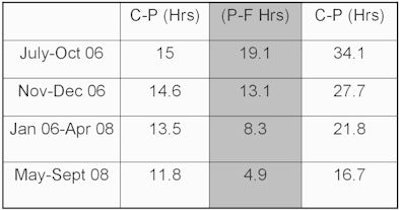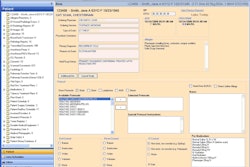
Cutting radiology report turnaround time is a key quality goal for hospitals. But administrators often find that simply emphasizing the importance of quick report turnaround through verbal or written communication doesn't necessarily produce better results.
People respond to rewards -- and radiologists are no different -- which raises the question: What happens to report turnaround time when pay-for-performance incentives are put in place?
Dr. Giles Boland, vice chair of radiology at Massachusetts General Hospital (MGH) in Boston, oversaw a pay-for-performance program in the department of radiology to help reduce report turnaround time. Boland presented the program's results at the 2008 RSNA meeting in Chicago.
"Report turnaround time is a strong quality metric," Boland said. "Everything we do in radiology boils down, finally, to the report, and that report is of little value until it has been signed."
MGH measured mean report turnaround time for its 98 radiologists, including 10 subspecialty divisions, for three months before the program began and for 15 months after it had been initiated. The hospital offered a bonus of $5,000 annually for full-time employees and $2,500 for half-time radiologists.
Key metrics indicating improvement included:
- The time from examination completion (C) to preliminary report availability (P) by resident or fellow
- The time from preliminary report (P) to final staff signature (F)
Time from exam completion to preliminary report availability, as well as time from preliminary report to final signature, were measured in hours directly from the hospital's RIS. The radiologists used voice recognition software to perform dictation.
The pay-for-performance initiative at MGH withholds a financial bonus for those who do not meet the institution's report turnaround guidelines. The report turnaround goal varied according to the type of practice (for example, two hours for ER versus 24 hours for neurointerventional radiology).
The study analyzed 976,259 reports. Mean time from exam completion to preliminary report availability for all reports for the total period dropped from 20 hours (range, 2.8-86) to 9.6 hours (range, 0.4-24). Mean time from preliminary to final report fell from 31 hours (range, 2-144) to 3.4 hours (range, 1-31).
Results -- all radiologists
|
|||||||||||||||
| Table courtesy of Dr. Giles Boland, Massachusetts General Hospital. |
During the study period, 12 of the 98 staff radiologists failed to meet MGH's report turnaround time guidelines. But the total report turnaround time fell from 55 hours to 13 hours over 12 months, demonstrating that the program was quite effective, according to Boland.
"We believe this incentive program had a major impact on patient care," he said.
Pay-for-performance is another tool departments can use to encourage radiology staff toward more efficiency, Boland said.
"Some people are self-motivated, and they get on with the task of producing their reports," Boland said. "Others are not. This kind of program is a positive initiative, rather than a punitive one, that can influence those radiologists who are not so judicious in getting their reports in on time."
By Kate Madden Yee
AuntMinnie.com staff writer
February 9, 2009
Related Reading
Web-based radiology dashboard aids in practice management, December 1, 2008
ED report turnaround times drop with speech recognition, November 19, 2008
Speech recognition shrinks report turnaround time, May 29, 2008
Voice recognition key to fast report turnaround, April 24, 2008
Speech recognition cuts report turnaround times, May 4, 2007
Copyright © 2009 AuntMinnie.com




















